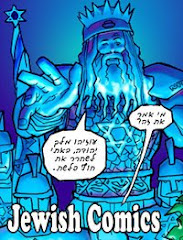Comics scholarship is a challenging but fascinating area of academic study. Requiring familiarity with both the theories of other academics and with the comic books, comic strips, and graphic novels that have been produced since the 1930s (or even earlier), comix scholars have attempted to produce innovative research and essays that allow comic fans a window into the "ivory tower" of universities and provide a glimpse into the "geek world" of comicdom for academics. It can be a slippery slope. If a particular paper or presentation is too comics-heavy and too light in theory, it may be dismissed by the academy. On the other hand, if the work is too heavy on theory and too light on comics, it'll probably bore the heck out of comic fans and general readers.
The acceptance of comics scholarship has been demonstrated at both academic conferences (most notably the annual one for the Popular Culture Association / American Culture Association) and at large comic conventions (most notably the ones in San Diego and New York). The Graven Images conference took place on the campus of Boston University in 2008 and was an eclectic ingathering of students, professors, comic creators and comic fans.
The book Graven Images: Religion in Comic Books and Graphic Novels attempts to combine not only academic scholarship and comix, but does so through the "lens" of religion. Since it is an anthology, it tries to do what comic anthologies
(e.g. Outragous Tales from the Old Testament, Testament, Cargo : Comic Journalism) do so well, i.e. offer something for everyone and bring together a diversity of viewpoints, voices, and artistic styles. Although full comic works are not reproduced in full, several of the essays do reproduce comic pages (e.g. there are 9 reproductions of comic art in the essay "Tell Tale Visions : The Erotic Theology of Craig Thomspon's Blankets"). Although most of the contriburors are researchers, there are also contributions from those who create comics : G. Willow Wilson, Douglas Rushkoff, and Mark Smylie.
Although I was only able to look at a limited part of the book (the foreword, introduction, 2 essays, and the index), the preview gave me the impression that the editors (A. David Lewis and Christine Hoff Kraemer) have done quite a commendable job in assembling this potpourri of religion-based comix scholarship. This is a book that is, in my humble opinion, worthy of a Harvey award or an Eisner award (perhaps both).
Review: People Who Eat Darkness, by Richard Lloyd Parry
-
*People Who Eat Darkness: The True Story of a Young Woman Who Vanished from
the Streets of Tokyo- and the Evil that Swallowed Her Up*, by Richard Lloyd
...
2 years ago







No comments:
Post a Comment